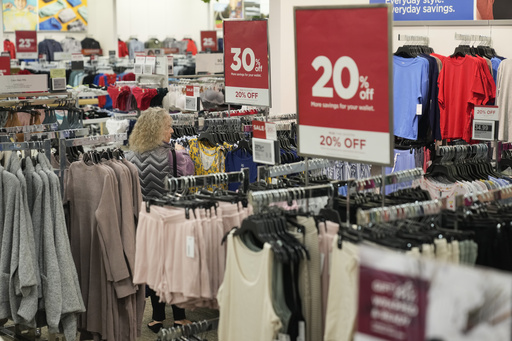
WASHINGTON — American consumers increased their spending at retail establishments last month, fueled by low unemployment rates, consistent wage growth, and rising values in both the stock market and real estate. This growing inclination to spend persisted even in the face of higher prices.
Retail sales experienced a rise of 0.4% from August to September, according to data released by the Commerce Department on Thursday. This marks an increase from the previous month’s 0.1% and signifies a third consecutive month of growth. Various sectors, including online shops, dining establishments, and grocery stores, all noted higher sales figures.
Conversely, gas station sales saw a decline, influenced by lower prices at the pump. It’s important to note that the retail sales data is not inflation-adjusted, although it was reported that the prices of goods dipped slightly last month.
As the presidential election approaches its climax, the recent statistics illustrated that consumer spending is a consistent driver of economic growth, even as inflation shows signs of easing. Donald Trump, campaigning for the presidency, has advocated for extensive new tariffs on imports and reductions in corporate taxes to stimulate robust economic growth. In response, Vice President Kamala Harris has proposed measures to expand tax credits for families with children, as well as government subsidies for home building, both aimed at alleviating housing costs.
Various retail sectors, including clothing stores, department outlets, and sporting goods retailers, all reported increased sales last month. However, there was a decrease in purchases at electronics and furniture retailers.
The government has indicated that consumer prices rose by only 2.4% in September compared to the previous year, a significant decrease from a peak inflation rate of 9.1% recorded in June 2022, and slightly above the Federal Reserve’s target of 2%. With inflation rates coming back under control, the Federal Reserve made its first interest rate cut in four years last month, reducing the benchmark rate by a substantial half-point. Economists now anticipate two more reductions by the end of the year, with these expected to be smaller quarter-point cuts, which should ultimately lower borrowing costs in the near future.
Many experts believe that ongoing low inflation combined with reduced borrowing rates will bolster the economy in the forthcoming months. During the last quarter, economic growth was recorded at a robust annual rate of 3%.
